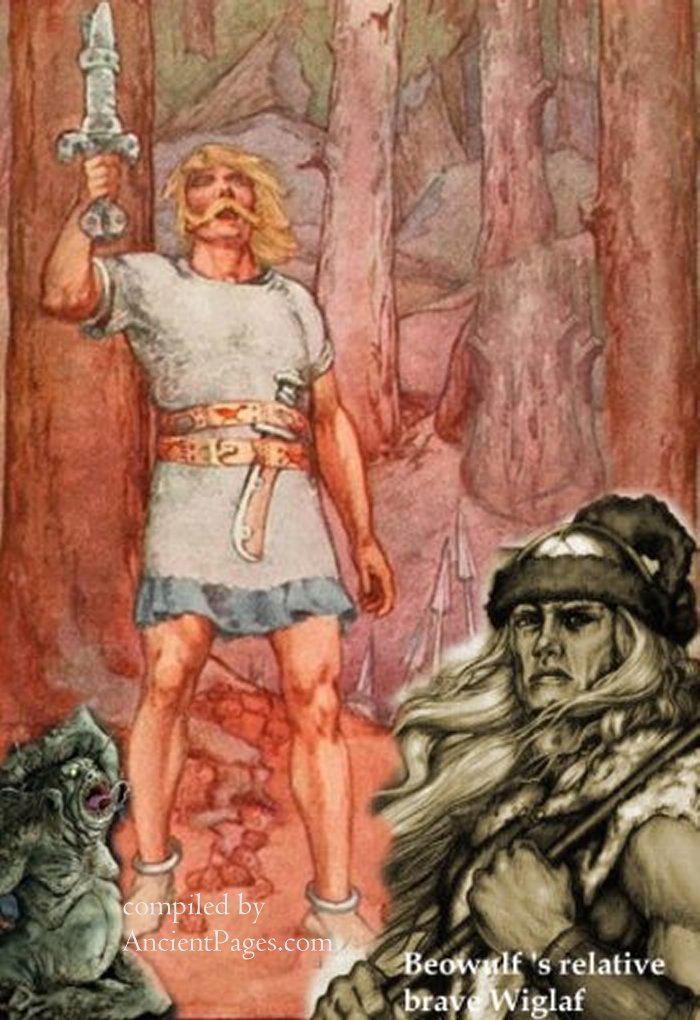Legendary Beowulf Fighting Dragon Grendel In Heroic Poem Written In Anglo-Saxon England
A. Sutherland - AncientPages.com - Beowulf's name has a power because it belongs to one of the most revered heroes among English-speaking cultures, with his tale enduring through many generations. This epic is often regarded as a cornerstone of Old English literature, reflecting its profound impact and timeless significance in the literary world.
Background image source
In reflecting on one of the most significant works of Old English literature, 'Beowulf,' we find a profound exploration of the hero and his battles. This epic not only chronicles the physical struggles faced by its protagonist but also delves into themes that resonate deeply with human experience, offering insights into courage, honor, and mortality.
This heroic poem spanning 3182 lines, is attributed to an unknown author, and stands as one of the earliest works in Old English literature. Its origins are likely traced back to oral traditions around the 8th century. By approximately the year 1000, this masterpiece was transcribed in the West Saxon dialect of Old English, probably by two scribes.
Some scholars propose that the poem was created in the literary dialect of Anglo-Saxon England, suggesting that its creation most likely occurred in the eleventh century. If so, it is interesting because this period coincides with the reign of Cnut, the Danish King, who notably made England his primary residence. Such historical context enriches our understanding of this remarkable work's place within its era.
The poem, with its roots in Central or North-East England, presents an intriguing blend of influences. While it is steeped in a Christian background, the vivid depictions of monsters vanquished by the hero Beowulf evoke a sense of a pre-Christian world. This juxtaposition invites reflection on the cultural and historical layers interwoven within its narrative.
In the poem, we find the venerable Hrothgar, the storied King of the Danes, residing in Heorot—a grand mead hall that stands as a symbol of his authority. For twelve long years, this magnificent hall and its loyal knights have faced relentless assaults by Grendel, a malevolent creature who invades under the cover of night. This ongoing struggle invites reflection on themes of power and vulnerability within even the most fortified realms.
The monster, a descendant of Cain symbolizes evil and corruption, embodies a blend of human and cruel traits, and it is known for its terrifying appetite for humans. Residing at the lake's depths near the King's hall, this creature makes people terrified and even Hrothgar and his people find themselves powerless against it.
J. R. Skelton – Illustration in the children’s book Stories of Beowulf (H. E. Marshall). – Public Domain
Therefore, they decide to abandon Heorot. One can wonder how the nature of fear and overwhelming malevolence are strong enough to cause the people’s helplessness and a total inability to act.
Now, the fascinating tale of Beowulf tells about a courageous young warrior from medieval times, who is believed to have lived in Geatland. While today we might associate this region with Sweden, it's important to recognize that during the Middle Ages, Geatland was regarded as an independent entity in both Old Norse and Old English sources.
Beowulf, a renowned hero of the Geats, learns about the difficulties faced by Hrothgar, the king of the Danes. With the King's blessing, he embarks on a courageous journey from his homeland, accompanied by a thoroughly selected group of warriors, determined to defeat Grendel.
Beowulf, possessing the strength of thirty men, confronts Grendel unarmed and triumphantly defeats him by tearing off one of the monster's arms.
Then, the hero bravely confronts and ultimately defeats his mother, who dwells at the depths of a lake. At first, Beowulf uses Hrunting, a magical sword; however, Grendel's mother is immune to its power. so, Beowulf defeats her using a sword he finds in her armory.
Rewarded with gifts from the Danish King, Beowulf becomes King of the Geats, a North Germanic tribe inhabiting what is now Götaland ("land of the Geats") in modern Sweden. He rules his country for fifty years.
Wiglaf is the single warrior to return and witness Beowulf's death. Illustration by J. R. Skelton, 1908. Public Domain
Then, the bad time came to Beowulf’s kingdom and a great terror fell upon his land.
A peasant carrying a golden object from a cave accidentally awakened the terrible monster, which began to destroy everything in its path. Accompanied by his young relative, Wiglaf, the only one of his warriors brave enough to stand by his side, Beowulf decides to take up his sword and shield for the last time and defeat the Dragon.
“It is in the final episode of the poem, Beowulf fights his last battle and meets his death, accompanied only by one loyal and fearless follower, his young kinsman Wiglaf…” 1
The tragic passing of the venerable King, succumbing to his battle wounds, marks a pivotal moment that demands our attention. His death is not just an end but a call to honor his legacy. As he is ceremonially burned on a magnificent pyre amidst the heartfelt mourning of his people, we are reminded of the profound impact he had on their lives. Building The Beowulf Barrow—a monument visible from the sea symbolizes his greatness and ensures that his memory will inspire future generations. But where is this barrow located? There are only a few possible locations for this barrow.
One candidate for the Land of the Geats” around modern town, Gothenburg, Sweden.
A Swedish archaeology professor and Director of the Swedish Museum of Antiquities, Birger Nerman, proposed Årnäs (Årnäs, a small village in Forshem parish, Götene municipality, 18 km northeast of Götene, 9 km west-southwest of Mariestad, Västra Götaland County.) was derived from Earna-næss and that Beowulf’s barrow might be at Skalunda. However, since Lake Vänern wouldn't have a place called Whales-ness due to its freshwater nature, a coastal location for Beowulf's barrow is much more plausible. Fortunately, there's another Årnäs about 10 km north of Varberg on the coast in the Geatish area.
In this famous literary work, we find several traces of Norse beliefs that include the necklace that Beowulf received as a reward for killing Grendel from the wife of King Hrothgar – Walto.
The artifact is comparable to the Brisingamen Necklace, Norse goddess Freya's greatest treasure. The hero then gave it to his uncle Higlak (Hygelak), King of the Geats, before he went against the Franks.
Does not the killing of the Dragon by King Beowulf remind us about Fafnir's killing? As told in one of the mythical Scandinavian accounts, Sigurd (also Siegfried) kills Fafnir, the Dragon.
Another interesting association is that the helmets of Beowulf's Warriors are decorated with the effigy of a boar, an animal dedicated to the god Frey (or Freyr, in Old Norse: 'Lord'), a shining god, bringing fertility, prosperity, and a good harvest.
It is also worth mentioning that Beowulf refers to his armor as the work of Wayland, a name that many of us associate with an Anglo-Saxon god-blacksmith and goldsmith.
There is no evidence of a historical Beowulf, but some characters, sites, and events described in the poem are historically verified. Also, the poem has never had a clearly defined title, and the name "Beowulf" is unclear and still disputed.
However, it may symbolize the hero's supernatural strength and courage.
Written by – A. Sutherland - AncientPages.com Senior Staff Writer
Updated on October 1, 2024
Copyright © AncientPages.com All rights reserved. This material may not be published, broadcast, rewritten or redistributed in whole or part without the express written permission of AncientPages.com
Expand for referencesReferences:
- Eliason, Norman E. “Beowulf, Wiglaf and the Wægmundings.” Anglo-Saxon England 7 (1978): 95–105.
John Grigsby, Beowulf & Grendel: The Truth Behind Englands Oldest Legend, 2005
J.R.R. Tolkien, Christopher Tolkien, Beowulf
More From Ancient Pages
-
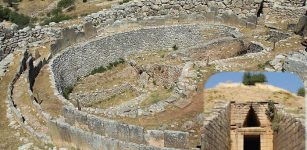 Mycenae Kingdom: Home To King Agamemnon And Tholos Tomb ‘Treasure of Atreus’
Civilizations | Jun 11, 2022
Mycenae Kingdom: Home To King Agamemnon And Tholos Tomb ‘Treasure of Atreus’
Civilizations | Jun 11, 2022 -
 Cosmic Impact 12,800 Years Ago Forced Hunter-Gatherers In The Levant To Adopt Agricultural Practices
Archaeology | Oct 4, 2023
Cosmic Impact 12,800 Years Ago Forced Hunter-Gatherers In The Levant To Adopt Agricultural Practices
Archaeology | Oct 4, 2023 -
 Mysterious Deserted Medieval Village And Castle Discovered In The Harz Mountains – 2,000 Artifacts Were Found
Archaeology | Nov 14, 2023
Mysterious Deserted Medieval Village And Castle Discovered In The Harz Mountains – 2,000 Artifacts Were Found
Archaeology | Nov 14, 2023 -
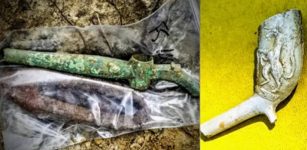 Tavern And Mysterious Tools Discovered In North Carolina – Stunning Ancient Time Capsule
Archaeology | Jun 19, 2019
Tavern And Mysterious Tools Discovered In North Carolina – Stunning Ancient Time Capsule
Archaeology | Jun 19, 2019 -
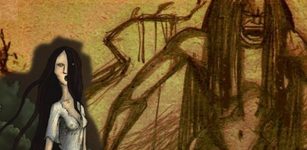 Patasola: Hideous One-Legged Female Vampire Who Kills Driven By Hatred In Colombian Folklore
Featured Stories | Jul 26, 2019
Patasola: Hideous One-Legged Female Vampire Who Kills Driven By Hatred In Colombian Folklore
Featured Stories | Jul 26, 2019 -
 Curious Bannerstones Used By Prehistoric Native Americans For Unknown Purpose
Artifacts | May 31, 2021
Curious Bannerstones Used By Prehistoric Native Americans For Unknown Purpose
Artifacts | May 31, 2021 -
 Puzzling Case Of An Ancient French Giant Whose Bones Caused Sensation And Controversy
Ancient Mysteries | Jan 22, 2019
Puzzling Case Of An Ancient French Giant Whose Bones Caused Sensation And Controversy
Ancient Mysteries | Jan 22, 2019 -
 Aboriginal Underwater Sites Off The Coast Of Australia – Discovered
Archaeology | Jul 2, 2020
Aboriginal Underwater Sites Off The Coast Of Australia – Discovered
Archaeology | Jul 2, 2020 -
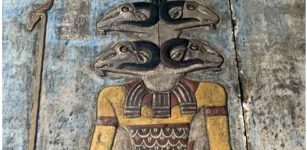 Reliefs And Engravings Of Celestial Bodies And A Zodiac On Walls And Ceilings Of Luxor’s Esna Temple
Archaeology | Oct 5, 2023
Reliefs And Engravings Of Celestial Bodies And A Zodiac On Walls And Ceilings Of Luxor’s Esna Temple
Archaeology | Oct 5, 2023 -
 Cousin-Marriages Were Uncommon In The Ancient World
Archaeology | Sep 14, 2021
Cousin-Marriages Were Uncommon In The Ancient World
Archaeology | Sep 14, 2021 -
 Cursed Biblical City Bethsaida May Have Been Found – But Scientists Argue About The Discovery
Archaeology | Sep 1, 2020
Cursed Biblical City Bethsaida May Have Been Found – But Scientists Argue About The Discovery
Archaeology | Sep 1, 2020 -
 Evidence Vikings Had Windows With Glass Panes Already Between 800 And 1100
Archaeology | Oct 11, 2023
Evidence Vikings Had Windows With Glass Panes Already Between 800 And 1100
Archaeology | Oct 11, 2023 -
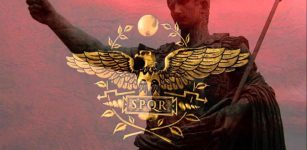 SPQR Was A Symbol Of The Roman Republic
Ancient History Facts | Dec 4, 2017
SPQR Was A Symbol Of The Roman Republic
Ancient History Facts | Dec 4, 2017 -
 Hephaestus (Hephaistos) – God Of Fire And Master Craftsman Constructed Talos, First Greek Robot And Divine Weapons Of The Gods
Featured Stories | Jul 7, 2018
Hephaestus (Hephaistos) – God Of Fire And Master Craftsman Constructed Talos, First Greek Robot And Divine Weapons Of The Gods
Featured Stories | Jul 7, 2018 -
 Giant Balor Of The Evil Eye – Terrifying Fomorian King And Grandfather Of Celtic God Lugh
Celtic Mythology | Apr 30, 2018
Giant Balor Of The Evil Eye – Terrifying Fomorian King And Grandfather Of Celtic God Lugh
Celtic Mythology | Apr 30, 2018 -
 Vikramashila: India’s Main Intellectual And Learning Center Of Tantric Buddhism
News | Sep 19, 2015
Vikramashila: India’s Main Intellectual And Learning Center Of Tantric Buddhism
News | Sep 19, 2015 -
 Stonehenge May Have Aligned With The Moon As Well As The Sun
Featured Stories | Jun 4, 2024
Stonehenge May Have Aligned With The Moon As Well As The Sun
Featured Stories | Jun 4, 2024 -
 Medieval Celtic Mystery Written In Konungs Skuggsja – The King’s Mirror
Featured Stories | Sep 13, 2018
Medieval Celtic Mystery Written In Konungs Skuggsja – The King’s Mirror
Featured Stories | Sep 13, 2018 -
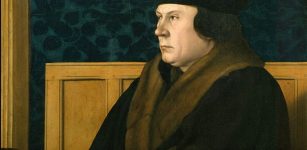 On This Day In History: Thomas Cromwell Arrested In Westminster – On June 10, 1540
News | Jun 10, 2016
On This Day In History: Thomas Cromwell Arrested In Westminster – On June 10, 1540
News | Jun 10, 2016 -
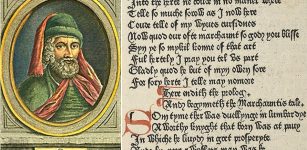 On This Day In History: William Caxton Printed His First Book – On Nov 18, 1477
News | Nov 18, 2016
On This Day In History: William Caxton Printed His First Book – On Nov 18, 1477
News | Nov 18, 2016


